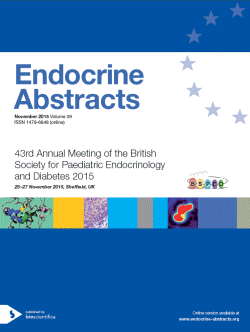
Society for Endocrinology BES 2015
Edinburgh,
UK
02 Nov 2015 - 04 Nov 2015

Clinical Management Workshops
Workshop 1: How do I do it? (Supported by <emphasis role="italic">Clinical Endocrinology</emphasis> and <emphasis role="italic">Endocrinology, Diabetes & Metabolism Case Reports</emphasis>)
ea0038cmw1.1 | Workshop 1: How do I do it? (Supported by <emphasis role="italic">Clinical Endocrinology</emphasis> and <emphasis role="italic">Endocrinology, Diabetes & Metabolism Case Reports</emphasis>) | SFEBES2015
How do I report and interpret a dual-energy X-ray absorptiometry scan?
ea0038cmw1.4 | Workshop 1: How do I do it? (Supported by <emphasis role="italic">Clinical Endocrinology</emphasis> and <emphasis role="italic">Endocrinology, Diabetes & Metabolism Case Reports</emphasis>) | SFEBES2015
How do I manage adrenal suppression?
ea0038cmw1.5 | Workshop 1: How do I do it? (Supported by <emphasis role="italic">Clinical Endocrinology</emphasis> and <emphasis role="italic">Endocrinology, Diabetes & Metabolism Case Reports</emphasis>) | SFEBES2015
How do I prevent thyroid eye disease after radioiodine?
ea0038cmw1.6 | Workshop 1: How do I do it? (Supported by <emphasis role="italic">Clinical Endocrinology</emphasis> and <emphasis role="italic">Endocrinology, Diabetes & Metabolism Case Reports</emphasis>) | SFEBES2015



